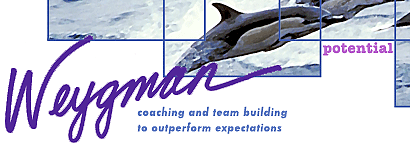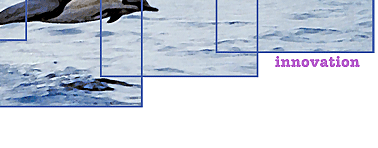 |
 |
 |
 |
|
Originally published in hrlook.comOrganization, Structure and MoraleBy Lorraine Weygman The more I experience teams, the more I enjoy the opportunity of seeing the heights people reach when they work together to ensure success for themselves and their organizations. Their strengths, their talents, their experience and their achievements are all put into play for an outcome that strengthens the organization and benefits everyone. Success strategiesA high performing team does not happen by chance. It begins with an organization that is clear about it’s mission, vision, values and priorities. Primarily, those in charge of adding new staff must attract, recruit, hire and train people whose personal mission, vision, values and goals match that of the workplace. This is particularly critical when attracting and retaining executive talent. It’s important to carefully guide and develop the individuals in a jointly planned succession process, where each side clearly communicates their goals and priorities - for the present and the future The professional development that goes along with this is more intensive and takes more time than most people expect. It is a long term commitment. At the same time, high performing teams can develop and prosper. Thus, teambuilding becomes the ultimate retention strategy. The hypothesis of management guru Peter Senge’s book, “The Fifth Discipline” is that the greatest competitive advantage stems from the ability of individuals and companies to learn. The idea is to learn more and faster than your competitors. The organizations that will excel in years to come, say the experts, will be those that understand how to gain the commitment of employees at all levels and continually expand their capacity to learn. Attitude toward changeAs organizations flatten their hierarchical structures to reduce bureaucracy, staff can be given more enabling opportunities. When their skills reach effective levels, they can be empowered to make higher level decisions, take greater responsibility and develop trust. Small, efficient “teams” are the building blocks of an organization. In the process, supervisory roles are changed so that a manager becomes more of a consultant or advisor and the teams are asked to manage themselves and be accountable for measurable goals. But flattening the pyramid structure, or eliminating the authoritarian management style, can be threatening to many tradition bound executives and their employees. Resistance to the new order may be strong. Too often, the organization has not determined the degree to which it is receptive to this type of change. PreparationIn an article entitled, “Don’t Get Angry – Get Ready For Change”, Robert Steele examines some key preparedness issues:
A clear plan, considerable communication and research at the beginning of the process can mean the difference between success and failure. In order to create highly functioning teams, recruit the finest talent that matches corporate values and its culture. Create an atmosphere of trust that encourages decision making, risk taking and respect for one another as individuals and for the work they perform. Generate opportunities for professional development. Honour the individual differences and respect the workplace…and…that’s only the beginning! Lorraine has over 25 years of international experience as an accomplished motivational speaker, consultant, writer, facilitator and radio host. She has been featured on radio and television and in numerous magazines and newspapers in North and South America, Britain and Russia. For more information about Lorraine, visit http://www.weygman.com This article may be copied as long as it's kept whole and Lorraine's bio is kept with the article, including the live link to her website.
|
"Your program is one of the best we’ve had. The response from the group reinforced my feelings that some of our staff need to recognize those issues that effect our workplace. You also picked up on the “bottom line” emphasis and the attempt to translate these problems and solutions into strictly a dollar issue. We appreciate that you addressed issues that are difficult to confront. Thank you for an excellent, thought provoking presentation." Richard L. Musselman, President, DynCorp Management Club, DynCorp Government Services Group |
||||||||||||
HOME • ABOUT US • SERVICES • ARTICLES • FAQS • MEDIA • LINKS • CONTACT US
If you have questions or problems with this site, please contact the
|
||||||||||||||